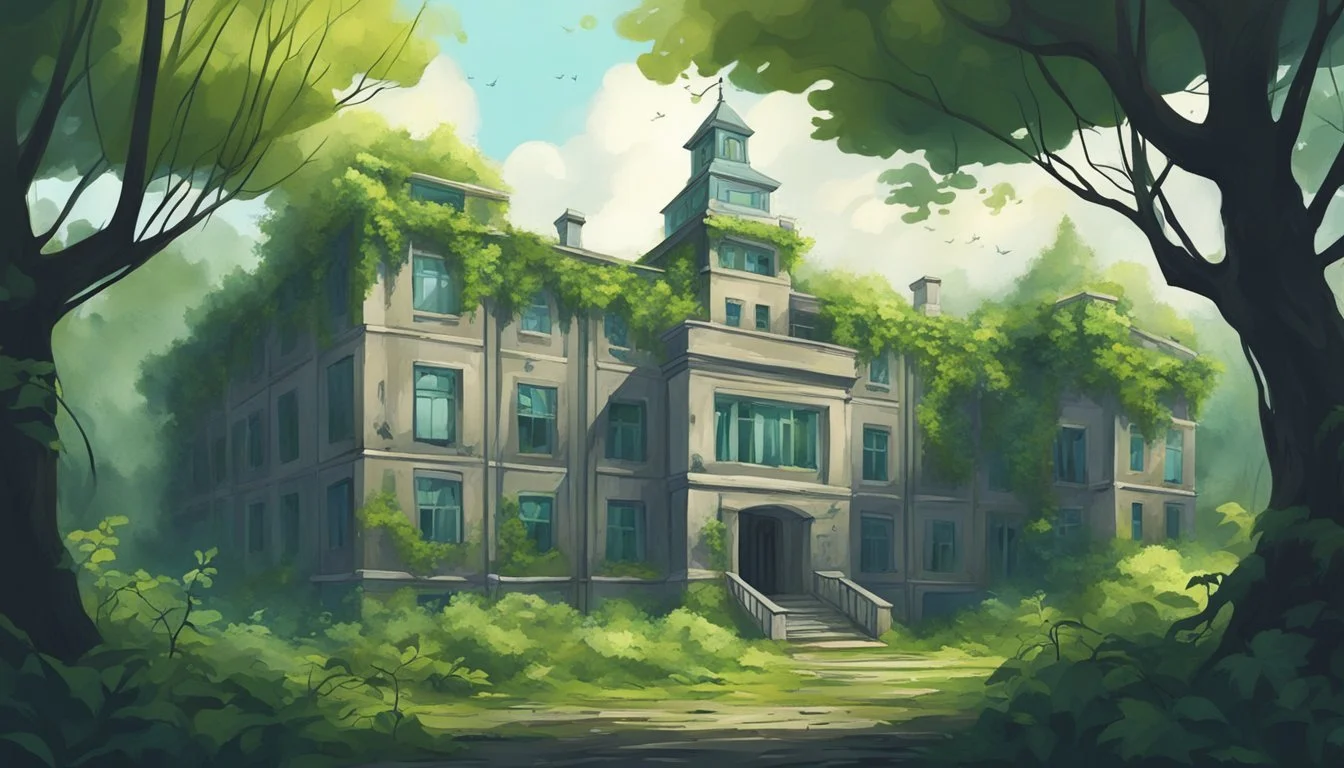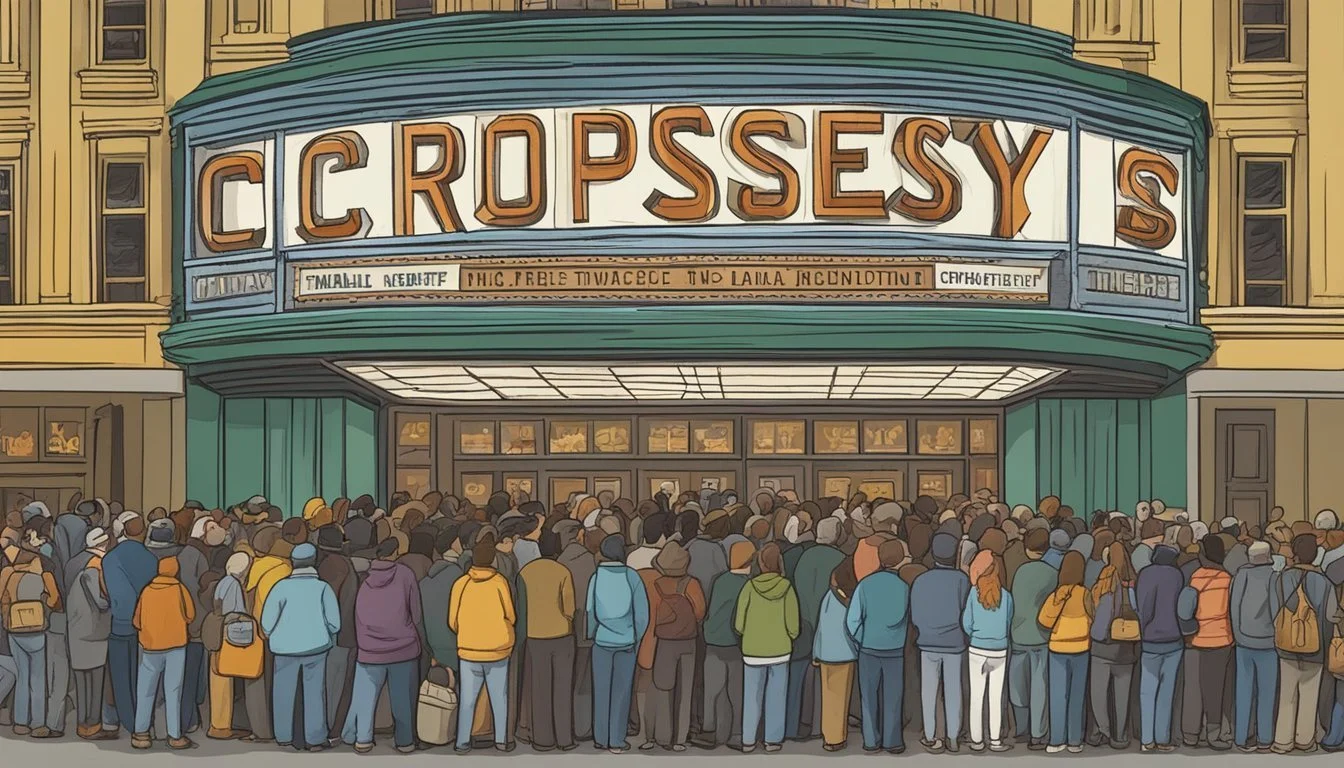Cropsey: The Real-Life Boogeyman Who Terrorized Staten Island's Children
"Cropsey" is a chilling documentary that explores the intersection of urban legend and true crime. Released in 2009, the film investigates the disappearances of multiple children on Staten Island in the 1970s and 1980s. Directors Joshua Zeman and Barbara Brancaccio uncover disturbing connections between these real-life cases and the local boogeyman figure known as "Cropsey."
The documentary delves into the story of Andre Rand, a convicted child kidnapper who became the prime suspect in several unsolved disappearances. Zeman and Brancaccio examine how Rand's alleged crimes may have fueled or been inspired by the Cropsey urban legend. Through interviews with law enforcement, locals, and victims' families, the filmmakers piece together a haunting narrative that blurs the lines between folklore and reality.
"Cropsey" serves as both a true crime investigation and a meditation on how communities process trauma through storytelling. The film's exploration of a real-life boogeyman captivates viewers, leaving them to ponder the power of urban legends and the dark truths that may lurk behind them.
Background on Cropsey Legend
Cropsey emerged as a terrifying urban legend on Staten Island, blending folklore with real-life events. The tale evolved over time, deeply affecting the local community and eventually gaining national attention.
Origins and Evolution
Cropsey began as a cautionary tale told to children on Staten Island. The legend described a deranged escaped mental patient who lived in the abandoned Willowbrook State School, preying on unsuspecting youngsters. As years passed, the story grew more elaborate, with different versions circulating throughout the borough. Some depicted Cropsey as an axe-wielding maniac, while others portrayed him as a child-snatching boogeyman lurking in the woods.
The legend took a dark turn in the 1970s and 1980s when several children actually went missing on Staten Island. These real-life disappearances fueled the Cropsey myth, blurring the lines between fiction and reality.
Influence on Staten Island Community
Cropsey's legend had a profound impact on Staten Island residents. Parents became increasingly protective of their children, limiting outdoor activities and enforcing strict curfews. The community lived in fear, with many believing the urban legend had come to life.
Local authorities faced mounting pressure to solve the missing children cases. The atmosphere of paranoia led to increased vigilance among neighbors, but also to false accusations and widespread mistrust. Schools implemented safety programs, and community watch groups formed to patrol neighborhoods.
The Cropsey legend ultimately became a part of Staten Island's cultural identity, shaping the collective psyche of its residents for generations.
Making of the Documentary
Joshua Zeman and Barbara Brancaccio embarked on a deeply personal journey to create "Cropsey." Their shared childhood experiences and Staten Island roots drove them to explore the intersection of urban legend and true crime.
Filmmakers' Inspiration
Zeman and Brancaccio grew up on Staten Island, where the Cropsey legend loomed large. As children, they heard stories of a boogeyman lurking in the abandoned Willowbrook State School. These tales left a lasting impression, prompting them to revisit the legend as adults.
The disappearance of Jennifer Schweiger in 1987 and the subsequent arrest of Andre Rand sparked their interest. They saw an opportunity to examine how urban myths can intertwine with real-life events.
Production Challenges
Filming "Cropsey" presented numerous obstacles. The directors faced resistance from local authorities and community members hesitant to revisit painful memories.
Accessing archival footage and official records proved difficult. Zeman and Brancaccio spent countless hours sifting through old news reports and court documents.
Interviews with key figures, including Rand himself, required persistence and careful negotiation. The filmmakers had to balance sensitivity towards victims' families with their pursuit of the truth.
Limited funding forced Zeman and Brancaccio to adopt a DIY approach. They often operated as a two-person crew, handling multiple roles throughout production.
Profiles
The Cropsey documentary examines two key figures: Andre Rand, the suspected perpetrator, and the victims whose disappearances shook Staten Island. Their stories intertwine to form the core of this chilling true crime narrative.
Andre Rand
Andre Rand emerged as the central suspect in the Cropsey case. Born in 1944, Rand worked as a janitor at the Willowbrook State School, a notorious institution for disabled children. He had a history of arrests for various offenses, including child molestation.
Rand's behavior raised suspicions among locals. He often camped in the woods near abandoned buildings, leading some to believe he was responsible for the missing children. In 1987, Rand was arrested for the kidnapping of Jennifer Schweiger, a 12-year-old girl with Down syndrome.
Despite limited physical evidence, Rand was convicted of kidnapping Jennifer Schweiger in 1988. He received a sentence of 25 years to life. In 2004, Rand faced another trial for the 1981 disappearance of Holly Ann Hughes, resulting in a second conviction.
Victims' Stories
The Cropsey case involved several missing children from Staten Island. Jennifer Schweiger's disappearance in 1987 marked a turning point, as her body was discovered near the grounds of Willowbrook State School.
Holly Ann Hughes vanished in 1981 at age 7. Her case remained unsolved for decades until Rand's conviction in 2004. Other victims linked to the Cropsey legend include Tiahease Jackson, Henry Gafforio, and Alice Pereira.
These disappearances spread fear throughout Staten Island. Families shared heartbreaking stories of loss and uncertainty. The community banded together, organizing search parties and supporting the victims' families.
The unsolved nature of some cases continues to haunt Staten Island residents. The documentary explores the impact on families still seeking closure decades later.
Willowbrook State School
Willowbrook State School was a state-supported institution for children with intellectual disabilities located on Staten Island, New York. It gained notoriety for its deplorable conditions and mistreatment of residents.
History
Willowbrook State School opened in 1947 as a facility intended to house 4,000 children. By the 1960s, it had become severely overcrowded with over 6,000 residents. Living conditions were abysmal, with widespread neglect and abuse.
In 1965, Senator Robert Kennedy made an unannounced visit, describing it as a "snake pit." This sparked some reforms, but problems persisted.
In 1972, investigative reporter Geraldo Rivera exposed the horrific conditions at Willowbrook through a televised exposé. His footage showed residents living in filth, many unclothed and smeared with feces.
Aftermath and Closure
Rivera's report caused public outrage and led to a class action lawsuit against New York State in 1972. This resulted in the Willowbrook Consent Decree of 1975, mandating improvements in care and eventual deinstitutionalization.
Willowbrook began downsizing in the late 1970s, transferring residents to community-based homes and facilities. It officially closed in 1987, marking the end of a dark chapter in disability care.
The site later became the grounds of the College of Staten Island. A memorial stands there today, commemorating former Willowbrook residents and promoting disability rights awareness.
Cultural Impact
The documentary "Cropsey" left a lasting impression on both the true crime and horror genres. Its exploration of urban legends and real-life crimes resonated with audiences and filmmakers alike.
True Crime Genre Influence
"Cropsey" helped popularize the investigative documentary style within true crime. Its approach of blending urban legend with real criminal cases inspired other filmmakers to explore similar territory. The film's focus on unsolved child disappearances and a potential serial killer tapped into primal fears.
Many subsequent true crime documentaries adopted "Cropsey's" technique of having the filmmakers personally investigate cold cases. This more immersive style became increasingly common in the years following the film's release. "Cropsey" also highlighted the impact of sensationalized media coverage on criminal investigations and public perception.
Horror Genre Reflection
"Cropsey" influenced horror films by demonstrating the power of blurring fact and fiction. Its examination of how urban legends can shape reality inspired horror movies to incorporate similar themes. The documentary's eerie atmosphere and exploration of childhood fears resonated with horror filmmakers.
Several horror films released after "Cropsey" featured storylines about investigators exploring local legends, mirroring the documentary's structure. The film's success also encouraged more horror movies to incorporate documentary-style elements for added realism. "Cropsey" showed how real-life locations and events could be used to create a sense of dread more potent than pure fiction.
Public Reaction and Reception
"Cropsey" sparked intense public interest and debate upon its release in 2009. The documentary captivated audiences with its exploration of urban legends and unsolved crimes on Staten Island.
Audience Response
Viewers were drawn to the film's blend of local folklore and true crime investigation. Many found the documentary's portrayal of the "Cropsey" urban legend particularly chilling. The unsolved disappearances of children and the focus on suspect Andre Rand resonated strongly with audiences. Online forums and social media buzzed with discussions about the case. Some viewers expressed shock at the real-life events depicted, while others debated Rand's guilt or innocence. The documentary's ambiguous ending left many viewers unsettled and eager to learn more about the case.
Critical Reviews
Critics largely praised "Cropsey" for its atmospheric storytelling and investigative approach. The film holds a 95% approval rating on Rotten Tomatoes. Reviewers commended directors Joshua Zeman and Barbara Brancaccio for their balanced presentation of evidence and interviews. Many critics noted the documentary's effective use of archival footage and eerie visuals to create tension. Some reviews highlighted the ethical questions raised by the filmmakers' unconventional methods. A few critics felt the documentary occasionally veered into sensationalism. Overall, "Cropsey" was recognized for its compelling exploration of a community's darkest fears and unsolved mysteries.


